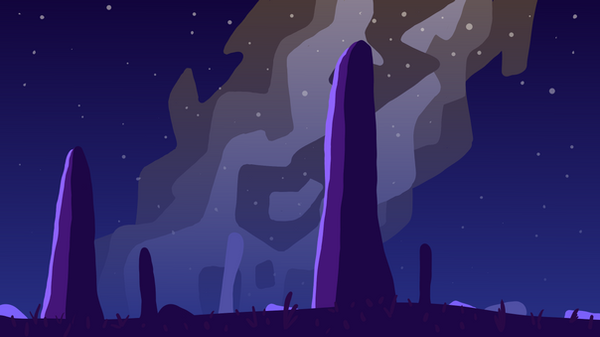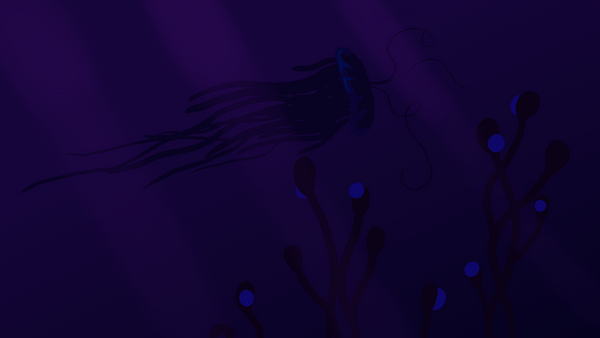
Pale Green DOT
the
The Monolithic Meadows are by far the most alien of Niclin's ecosystems. The rocky landscape
was infested with life only a few million years ago. The view is much like Earth's Early Devonian
Period as towering featureless fungal pillars loom over the shrubs and grasses.

The Afterworldly Lake is the largest inland sea on Niclin. Here, forgotten survivors of the last
extinction event hide from the apex predator known simply as “Angels”. Angels lay in plain sight,
shaped like Earth’s common jellyfish; they move in hypnotic patterns, waiting for their next meal.
The only plants are pitch black kelps, as the sea’s depths hide the sunlight.

The Megaflora Jungle is a lush paradise of biodiversity. Countless plants and animals call these coal forests home, but in these wonderful woods, competition still exists. Animals the length of cars trample bushes and unfortunate rodents. Plants, trying to starve their neighbors, grow to
the size of city blocks! Life in the Jungle is full of wonders, as well as dangers.

The Metallic Swamps, just like our Asphalt Jungles, are rather new environments formed in the shadow of the planet's dominant species. Life clusters around leaky pipes and damp runes speeding their decay. These oases have not gone unnoticed however, as they have been used by the dominant species to act as an important ingredient in mass-produced biohydrogen, Niclin’s most reliable fuel as petroleum has not gotten the chance to form.

The Great Sulfuric Sea is the largest environment on Niclin; this shallow ocean wraps around the equator, splitting the land into two continents on each of the poles. The Sulfuric Sea, as the name suggests, is rich in toxic sulfuric substances which poison most complex life. As a result of no predators, cyanobacteria populations have grown to unimaginable sizes giving the sea its green coloring and pumping the atmosphere full of oxygen. This allows the colossal plants and animals found within the Megaflora Jungle to exist.

The Kiln Desert is the largest desert of Niclin but its name is an overexaggeration as temperatures are relatively comfortable. The desert got its name from the historic empire that called these lands home. What makes it a desert is the vast mountain range that cuts off flatlands from the humid sea leading to the dry landscape. Lifeforms are slow and careful to conserve the limited water that bypasses the mountains.

The Ice Caps at first glance look like frozen deserts of white. A closer look reveals the hundreds of tiny oases created by colonies of bacteria and microscopic animals buried in the snow. Working together these organisms bring up nutrients from the glacier’s bottom to feed plant life, supplying the colony with energy. Animals on the surface have learned to tap into these oases to feed themselves, but they have to be careful not to destabilize the cycle and die of starvation.

